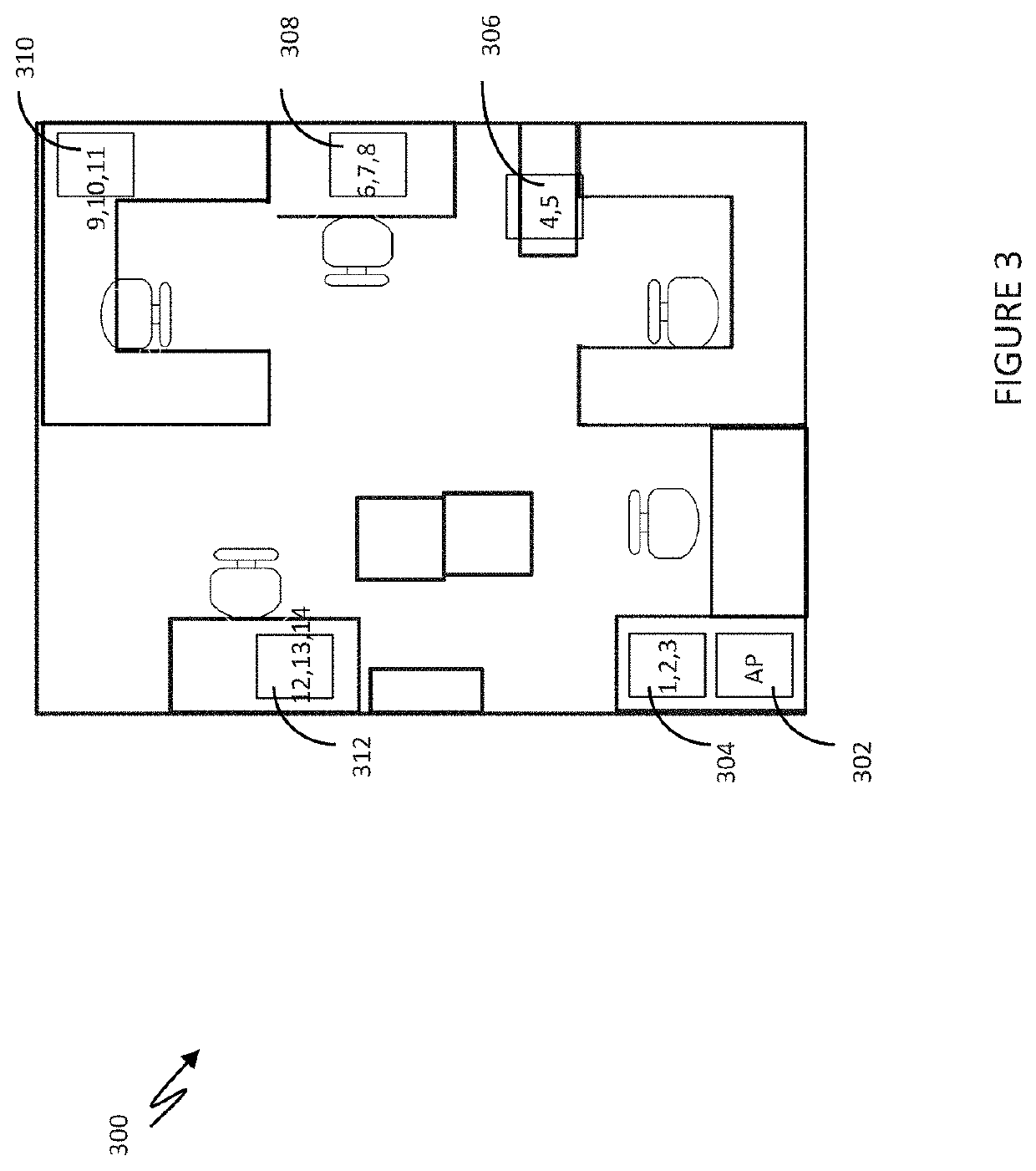Time-reversal scalability for high network densification
- Summary
- Abstract
- Description
- Claims
- Application Information
AI Technical Summary
Benefits of technology
Problems solved by technology
Method used
Image
Examples
Embodiment Construction
[0033]In this disclosure we describe exemplary embodiments of systems that can efficiently deliver data wirelessly to large numbers of terminal devices (TDs) 100. The time-reversal division multiple access (TRDMA) systems may include a single or multiple access points (APs) that work under a TRDMA scheme. As shown in FIG. 1, multiple APs 102 can be distributed in an area to accommodate multiple various TDs 104. In exemplary embodiments there may be little or no coordination among the APs 102 and each TD 104 may be served by only one AP 102a at a time with the signals received from other APs, e.g., 102b, 102c, 102d, regarded as interference. In other exemplary embodiments, there may be coordination among the APs 102 and the TDs 104 may be able to distinguish a signal from one AP 102b from a signal from another AP 102c. In embodiments, the APs 102 may use time-reversal techniques to focus at least some of the signal power at intended TDs, e.g., 104a, 104b, while creating little interf...
PUM
 Login to View More
Login to View More Abstract
Description
Claims
Application Information
 Login to View More
Login to View More - R&D
- Intellectual Property
- Life Sciences
- Materials
- Tech Scout
- Unparalleled Data Quality
- Higher Quality Content
- 60% Fewer Hallucinations
Browse by: Latest US Patents, China's latest patents, Technical Efficacy Thesaurus, Application Domain, Technology Topic, Popular Technical Reports.
© 2025 PatSnap. All rights reserved.Legal|Privacy policy|Modern Slavery Act Transparency Statement|Sitemap|About US| Contact US: help@patsnap.com



